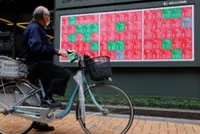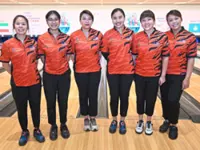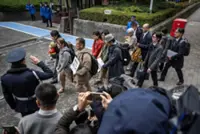A computer simulation by Japanese scientists at research giant Riken and Kobe University, illustrates the effectiveness of different mask combinations worn to curb the spread of droplets during the coronavirus (COVID-19) outbreak, in this presentation slide supplied by the Riken Center for Computational Sciences on March 5, 2021. Red is a loosely fitted non-woven mask. Green is a fitted non-woven mask. Green and brown are a non-woven mask with a polyurethane one on top. The bar graph illustrates the ‘droplet collection efficiency’. The blue bar shows the results of wearing loose-fit non-woven (surgical) mask. while red shows a fitted non-woven mask, and purple shows a fitted non-woven mask plus polyurethane mask. — Riken/Handout via REUTERS
TOKYO: Japanese supercomputer simulations showed that wearing two masks gave limited benefit in blocking viral spread compared with one properly fitted mask.
The findings in part contradict recent recommendations from the US Centers of Disease Control and Prevention (CDC) that two masks were better than one at reducing a person’s exposure to the coronavirus.
Already a subscriber? Log in
Save 30% OFF The Star Digital Access
Cancel anytime. Ad-free. Unlimited access with perks.





